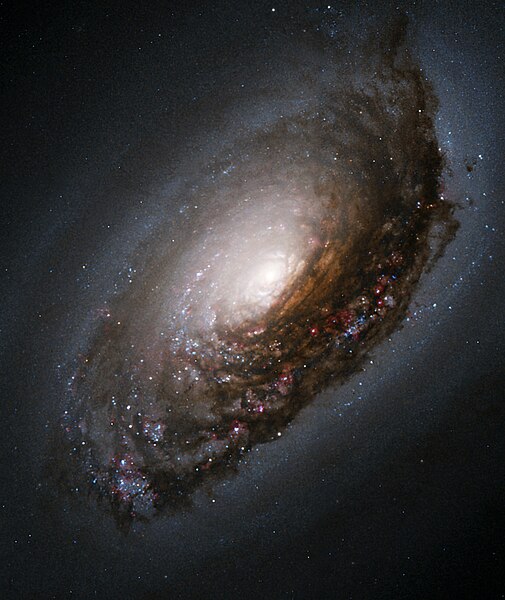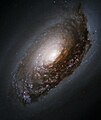Fil:Blackeyegalaxy.jpg

Storleik på førehandsvising: 505 × 600 pikslar. Andre oppløysingar: 202 × 240 pikslar | 404 × 480 pikslar | 897 × 1 065 pikslar.
Opphavleg fil (897 × 1 065 pikslar, filstorleik: 774 KB, MIME-type: image/jpeg)

Følgjande er henta frå filomtalen åt denne fila på Wikimedia Commons:
Filhistorikk
Klikk på dato/klokkeslett for å sjå fila slik ho var på det tidspunktet.
| Dato/klokkeslett | Miniatyrbilete | Oppløysing | Brukar | Kommentar | |
|---|---|---|---|---|---|
| gjeldande | 2. juni 2005 kl. 11:46 |  | 897 × 1 065 (774 KB) | CWitte | This image of M64 was taken with Hubble's Wide Field Planetary Camera 2 (WFPC2). The color image is a composite prepared by the Hubble Heritage Team from pictures taken through four different color filters. These filters isolate blue and near-infrared lig |
Filbruk
Dei følgjande 4 sidene bruker denne fila:
Global filbruk
Desse andre wikiane nyttar fila:
- Bruk på af.wikipedia.org
- Bruk på ar.wikipedia.org
- Bruk på ast.wikipedia.org
- Bruk på az.wikipedia.org
- Bruk på be.wikipedia.org
- Bruk på bg.wikipedia.org
- Bruk på bn.wikipedia.org
- Bruk på br.wikipedia.org
- Bruk på bs.wikipedia.org
- Bruk på ca.wikipedia.org
- Bruk på ce.wikipedia.org
- Bruk på ckb.wikipedia.org
- Bruk på co.wikipedia.org
- Bruk på cs.wikipedia.org
- Bruk på cy.wikipedia.org
- Bruk på de.wikipedia.org
- Bruk på diq.wikipedia.org
- Bruk på el.wikipedia.org
- Bruk på en.wikipedia.org
- Messier object
- Coma Berenices
- List of galaxies
- Portal:Astronomy/Picture/May 2005
- Portal:Astronomy/Picture/12 May 2005
- Portal:Astronomy/Picture/Week 48 2005
- User:ComaDivine
- User:Superfo
- User:Gilgamesh~enwiki/Favorite images
- List of spiral galaxies
- Portal:Solar System
- Portal:Solar System/WikiProjects
- User:Passargea/Favourite pictures/Space
- User:Logos/Hall of Galaxies
- User talk:Example/Archives/2008/April
- User:Mike YuHong Chen
- User:Stefania.deluca/sandbox
Sjå meir global bruk av denne fila.
